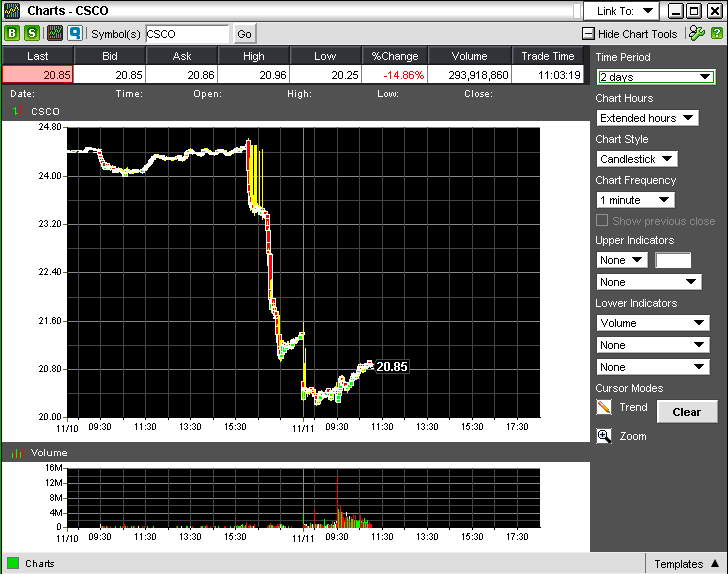Cisco's public sector woes: Will they spread to other tech vendors?

If weak public sector spending---state and local governments---was enough to cast a pall on Cisco's first quarter earnings report other big technology vendors may feel the heat too.
Cisco's first quarter earnings were disappointing on many levels. Cable, service providers and government spending all took a hit in the quarter and dinged Cisco. That government spending issue sounds a bit counterintuitive given that the Feds are printing money and running up deficits, but remember the states have to balance budgets somehow. The local government picture isn't pretty. Governments have shed 123,000 jobs over the past 12 months, according to the Bureau of Labor Statistics.
If you're lucky---at least for a tech vendor---you'll get work as states consolidate data centers. Almost every state has a technology consolidation project under way. Consolidation ratios typically run something like a dozen data centers to one. Those projects are fine for integrator and transformation companies---think IBM services---but suck the wind out of any vendor looking to sell equipment.
Cisco CEO John Chambers gave the public sector outlook. The upshot: Governments are broke.
First, we did see mixed results on a global basis from our public sector business. We had solid orders growth in the midteens or better in the US federal public sector, and also the emerging markets public sector. However, we did see challenges, for example, in the US state government business, down in Q1 approximately 25% year-over-year from an orders perspective. And to give you an idea of how rapid a change this was, the state government business was down 48% from Q4 to Q1 from an orders perspective.
We saw the similar challenges in our Japanese government business, as well as orders from certain central governments in Europe. We believe the public sector business will continue to be challenging for at least several quarters. The public sector represents about 22% of our total product orders in Q1.
Not surprisingly, Chambers was asked whether Cisco's public sector troubles are company specific or an industry concern. Chambers said:
I think everyone on this call understands what is going on in public sector. So I would be very surprised if that does not have an effect on companies who do business in public sector on a global basis. For us it is 22% of our business. And as a reminder, our enterprise is 23% of our business, public sector is 22% of our business, the commercial is about 20% of our business, and service provider is about 33% of our business.
Analysts on Thursday were debating those comments from Chambers. Some said that Cisco's problems are company specific. There could be something to that argument. After all, Computer Sciences Corp. (CSC) reported earnings on Wednesday and didn't flag any major hurdles with government IT projects. Growth rates for government wins will be mid-single digits. However, Mike Laphen, CEO of CSC, said the company continues "to see some delays in procurements" as contract awards fall prey to politics and protests. However, there weren't any public sector alarm bells.
In addition, CDW's IT survey released Thursday found that 86 percent of government IT decision makers anticipate replacing or installing software in the next six months—an increase of 9 percentage points since August 2010.
The other side: Chambers could be right. If so here are a few key technology names that may encounter turbulence as state and local governments pull back on IT spending.
IBM: In IBM's third quarter earnings report, public sector represented the second largest slice of the revenue pie. By industry, the public sector represented $4 billion in revenue, second only to financial services at $7.1 billion. Now growth rates weren't jumping off the charts, up 2 percent from a year ago. But there was little mention about public sector spending on IBM's last conference call. The upshot: IBM via services and consolidation projects is diversified enough to weather the public sector issues.
HP: Hewlett-Packard reports its earnings this month and rest assured that public sector spending will be front and center as a topic. HP could take a hit on two levels from lower public sector spending. First, its services unit has some key government contracts. And second, HP sells a lot of equipment to governments just like Cisco does.
Xerox: Via its ACS acquisition, Xerox will have a lot of services exposure to public sector spending. ACS works on projects ranging from public safety to energy to finance to healthcare and transportation systems.
Dell: Dell will report third quarter earnings next week and will be among the first companies to field questions about the public sector. In the second quarter, Dell's public sector growth was up 22 percent from a year ago.
Oracle: Larry Ellison & Co. also has a strong government presence. At Oracle's analyst day powwow in September the company made multiple references to being No. 1 in the public sector as well as touting wins in government agencies. However, there were no worries at the time.
Unisys: This company derives nearly half of its revenue from government contracts (47 percent to be exact). In the company's third quarter earnings conference call transcript, there wasn't anything alarming about the public sector spending. Growth was so-so, but nothing shocking.
What remains to be seen is whether Cisco's public sector issues are company-specific or a sign of larger worries. If it's the latter, the aforementioned companies above will be the ones to watch.
